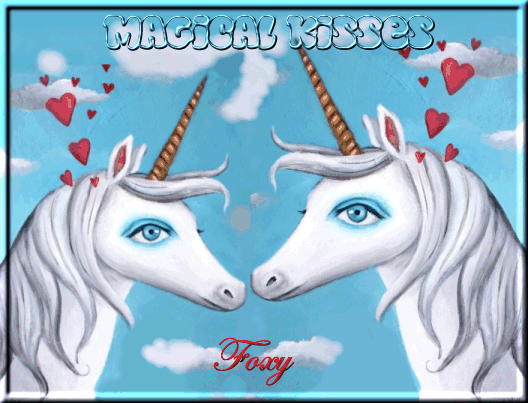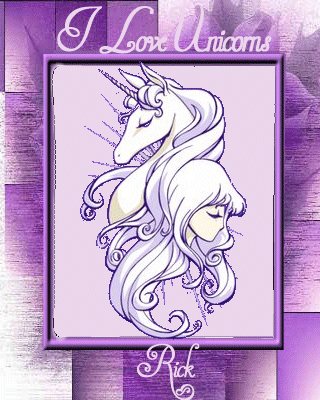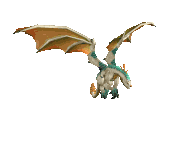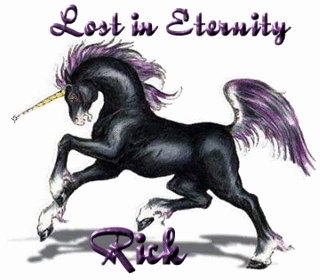Post by QueenFoxy on Dec 17, 2017 11:34:15 GMT -6

A Brief History of the Unicorn
In a centuries long case of mistaken identity, we've finally rounded up another suspect. The June 11 discovery of a one-year-old, one-horned deer may put Bambi in the company of the rhinoceros, the narwhal and the oryx as creatures who spawned the enduring myth of the unicorn.
In this case, the single horn on the Italian deer found at a wildlife preserve in the town of Prato, outside of Florence, is attributed to a genetic mutation, but its discoverers aren't ruling out the possibility that other creatures with similar abnormalities could have been spotted throughout history, and contributed to the persistent unicorn legend. Whatever the present-day implications of this discovery, however, historically speaking, scientific evidence has seldom played a role when it comes to believing in unicorns.
Before they were ubiquitous in contemporary little girl culture — and across the intellectual spectrum, from 15th century tapestries now on display at the Metropolitan Museum of Art to transporting Doogie Howser in the latest Harold & Kumar installment — rumors of unicorns were passed across the continents, and through the centuries, in something akin to an enormous game of telephone.
Perhaps the best example of this is also the first written reference in Western literature to a single-horned "wild ass." In the 4th century B.C., a Greek doctor named Ctesias traveled through Persia (now Iran), in the service of the Persian king, where he heard many tales from Indian travelers about creatures back home. Later writing them down, he described "wild asses as large as horses" that had white bodies, red heads and dark blue eyes, and "a horn on the forehead, which is about a foot and a half in length." He also said that the horns were multicolored, and that the animals were so swift and powerful that "no creature, neither the horse or any other, could overtake it."
Of course, more than likely, Ctesias had never actually seen this creature himself, but was relying on other people's accounts. As unicorn expert (yes, they do exist), Odell Shepard explained in The Lore of the Unicorn, Ctesias most likely fused details of multiple creatures, including the Indian rhinoceros, to create this fantastical being. But during that era it was common for stories to travel great distances by word of mouth, and as Artistotle argued, when the tale made its way to him, was this single-horned, silvery being any more absurd to imagine than a giraffe or an elephant?
A translation error, when Hebrew scripture was rendered into Greek, added to the allure of the creature now known as the unicorn. The wild ox, a now-extinct creature rendered in bas relief profiles with one horn, was translated in Greek as monokeros or one-horned. In the Latin bible of the Christian world that became unicornos and "unicorn" by the time the English translators of King James got to work. And so, God impresses His power upon Job by saying, "Will the unicorn be willing to serve thee, or abide by thy crib? Canst thou bind the unicorn with his band in the furrow? or will he harrow the valleys after thee?"
The creature, long believed to have mystical powers — Ctesias wrote about people grinding its horn down to mix into a restorative elixir — now took on greater symbolic powers too. The unicorn both came to represent Christ, and also began to represent purity and chastity. The idea that unicorns could only be tamed by virgins became a widely held belief, and images of unicorns resting their heads in chaste womens laps, with not so subtle sexual undertones, began to appear in artwork. Likely for similar reasons of imagery and historical belief in its purity and healing powers, over time the unicorn was adopted as a symbol of power and royalty, most notably becoming the symbol of the Scottish crown.
While unicorn legend evolved in the West, in the Far East, similar creatures developed in mythology. The Japanese unicorn, or kirin (after which the beer is named) is a fierce creature able to root out criminals, instantly punishing them by piercing them through the heart with its horn. In China, the similarly named qilin had quite a different disposition. It harms no creature, and its presence is considered a good omen. Reportedly, a qilin appeared to Confucius' mother before he was born.
In more modern times, people have searched for evidence of unicorns, or in its absence, fabricated their own. Most notably was the hulking, alien-looking skeleton fabricated by a German scholar in 1663. In the 1930s, an arguably mad scientist from Maine manipulated the horns of a calf so that they grew entwined as one, proving, at least in theory that unicorns could exist — sort of. Not to be outdone, Barnum and Bailey managed to fuse the two horns of a white goat, named Lancelot, to the glee of fans throughout the 1980s.
As to why, until Wednesday, unicorns have seldom been spotted, theories vary wildly, but one of the most interesting falls squarely on Noah's shoulders. Legend holds that when Noah had to pack up the Ark in the face of the flood, the unicorns were just too slow getting to the boat (either that, or they were so proud that they were taking up more than their fair share of space, and Noah had to kick them off). As the Irish Rovers sing in "The Unicorn": "Close the door because the rain is falling/ And we just can't wait for no unicorns."
Of course, there are optimists who think that somehow the unicorns managed to survive, morphing, slowly over the years into the bizarre but documented flesh-and-blood narwhal, a member of the porpoise and whale family that does indeed have a single, twisty tooth which it uses for mating and to pick holes through the ice. Indeed, perhaps that's what became of the unicorns that never made it onto the ark. They took to the sea. Throughtout the centuries, the narwahl's long, corkscrewing tooth was sold as a unicorn's horn, proof that the most elusive of creatures existed.











